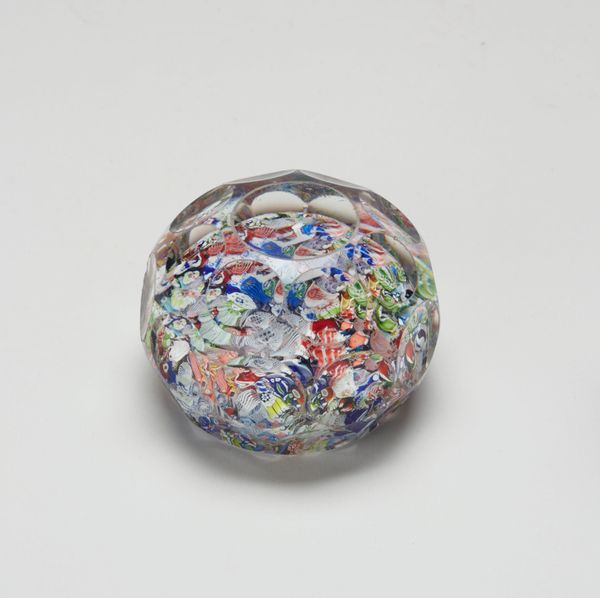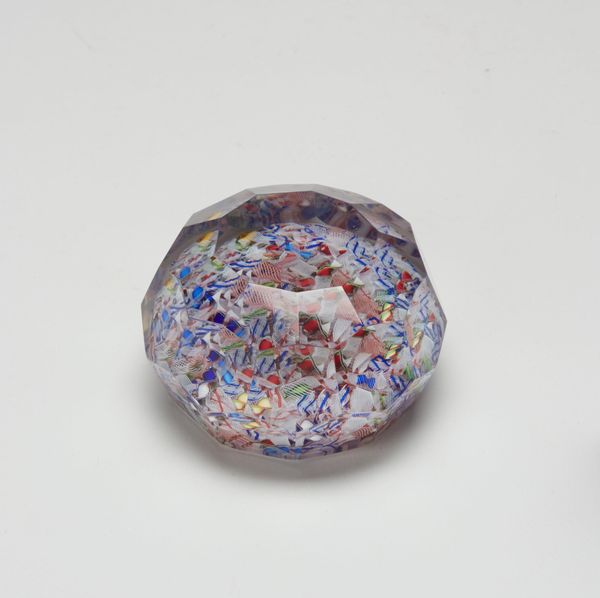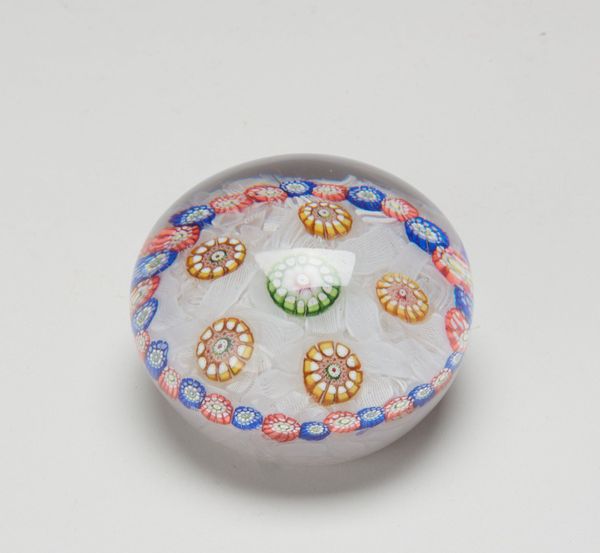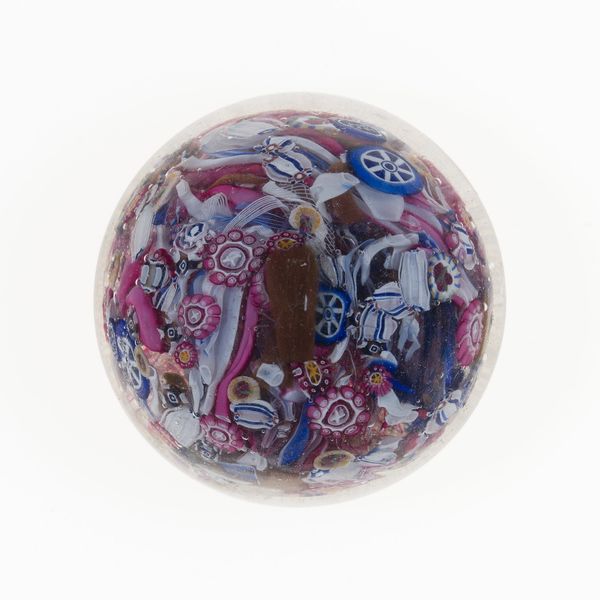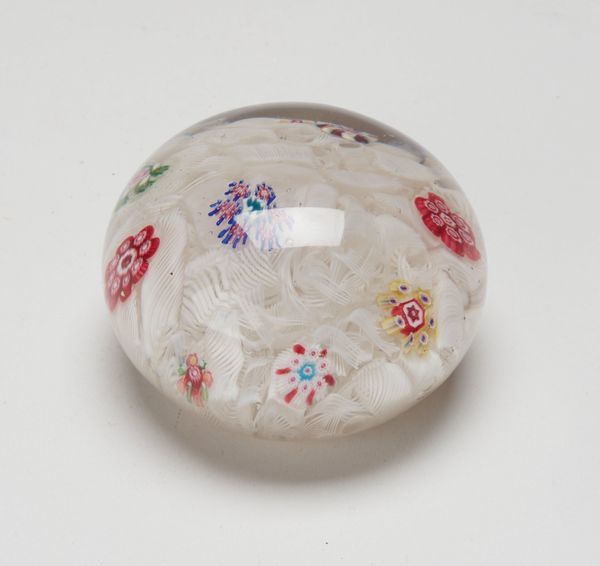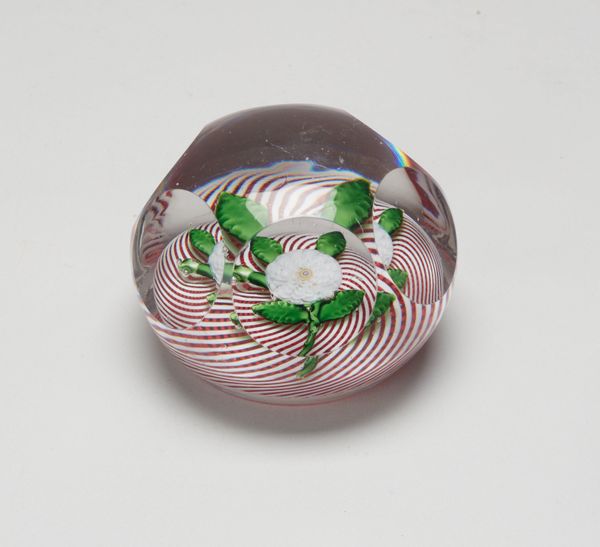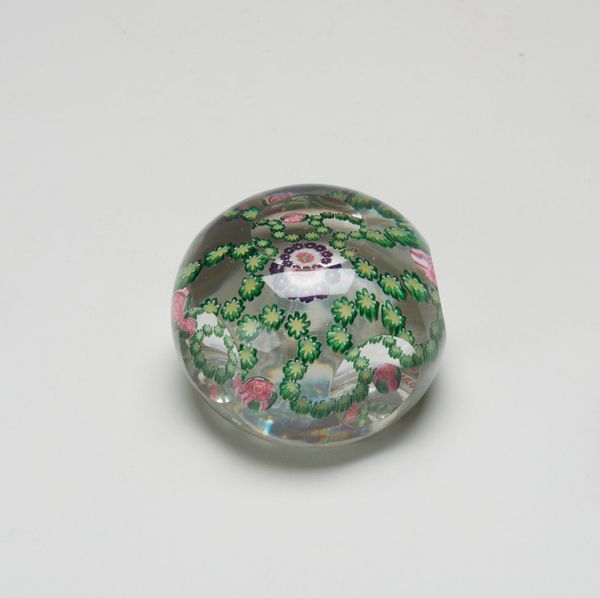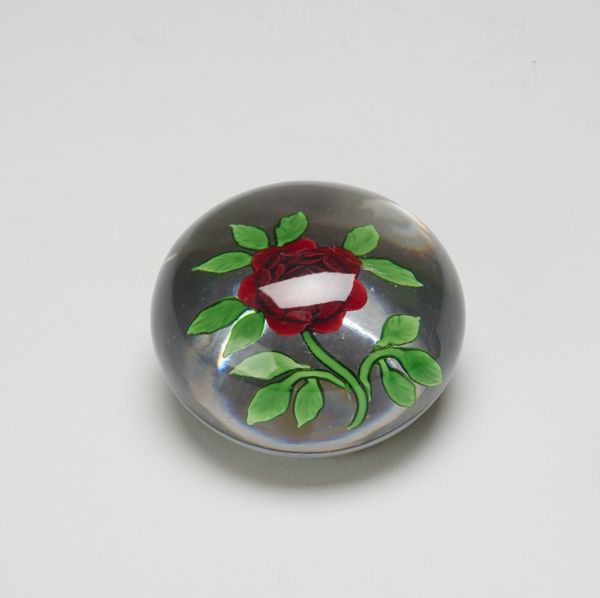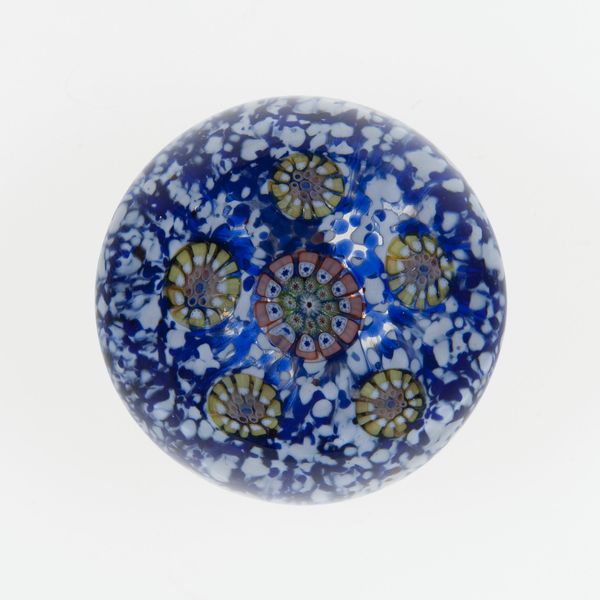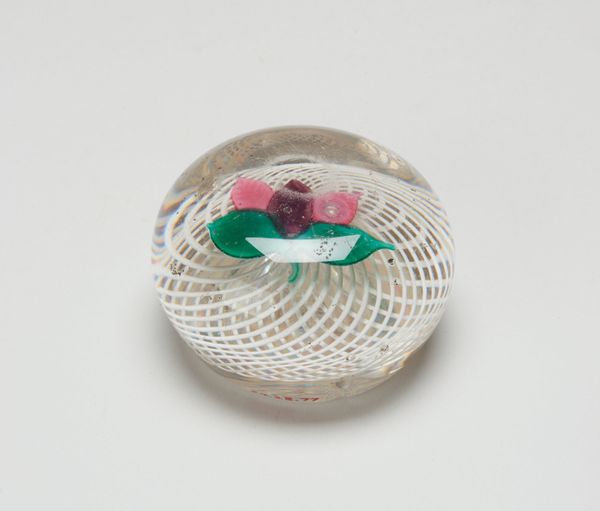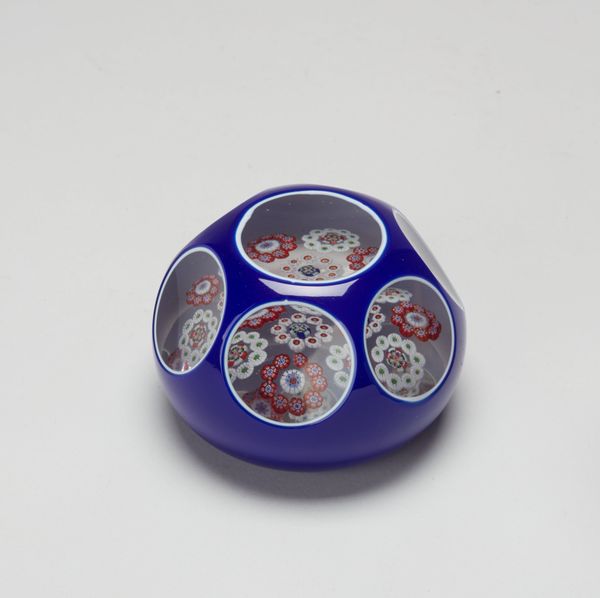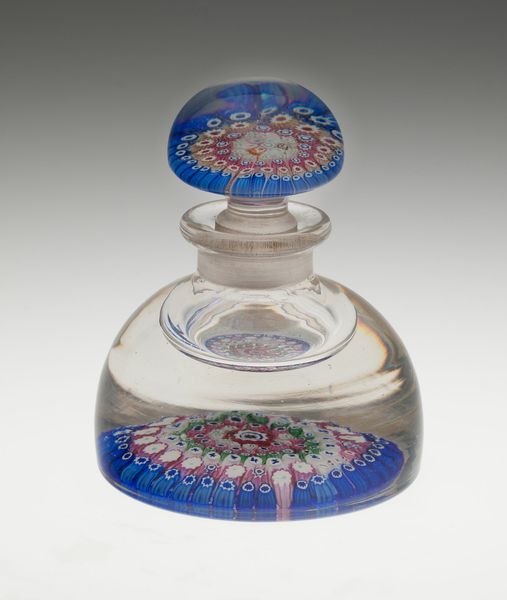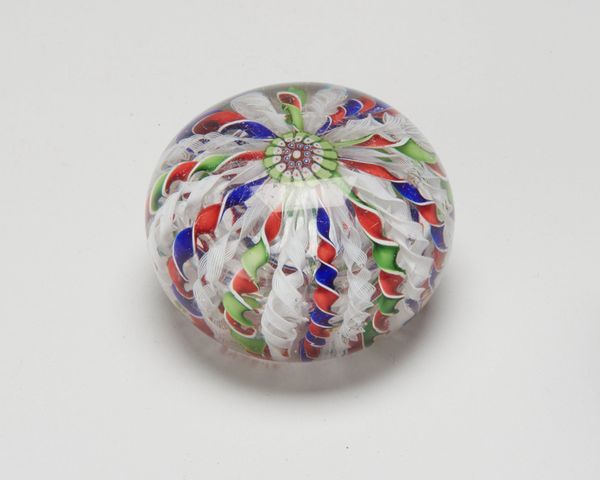
glass
#
decorative element
#
glass
#
united-states
#
decorative-art
Dimensions: 2 x 3 in. (5.1 x 7.62 cm)
Copyright: Public Domain
Curator: My first thought is one of contained chaos, almost like an ecosystem frozen in time. Editor: That's an interesting way to put it. I'd like to introduce "Paperweight," a lovely glass piece made by the New England Glass Company sometime between 1860 and 1870. It's currently housed here at the Minneapolis Institute of Art. Curator: Glassblowing. Note how the circular form both magnifies and distorts the floral designs held within, altering our perception of them depending on the angle of view. Editor: To me, the motifs echo simpler times. Consider the Victorian era and the rise of manufactured goods for the home meant to instill a sense of security through idyllic representations of nature, but here reduced to ornament. It seems like such objects offered comfort during a period of immense industrial change. Curator: Precisely, the technique allows for standardized yet detailed forms. See the millefiori—thousands of tiny floral components—carefully arranged to create a visually intricate display within the perfectly geometrical clear glass dome. Editor: Yes, it is a visually potent item, especially when seen alongside the backdrop of post-Civil War America; a time when citizens began focusing less on local craft and more on industrially-created artwork. Its design represents beauty as progress, almost as though natural abundance can be reliably maintained through industriousness and scientific observation. Curator: Don't you find, though, that its primary value comes from the masterful orchestration of light? Look how light refracts through the facets, how color is internally amplified by each curve. The composition plays on depth and dimension as an optical illusion. Editor: The way that these objects are experienced really is important, as it becomes apparent that memory and nostalgia have the capacity to both soothe and influence perceptions about national identity. And the work's placement in the home creates an illusion, albeit one that implies an optimistic narrative regarding progress. Curator: Very insightful! It underscores the enduring relevance of seemingly simple forms. Editor: Indeed. By considering history and symbolism, we've peeled back some intriguing dimensions of this object.
Comments
No comments
Be the first to comment and join the conversation on the ultimate creative platform.
